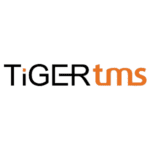 To start with a TL;DR, there are the costs hotels see and the ones they don’t. Right now, hotels are operating significantly above pre-pandemic cost indexes. While it’s easy to point the blame at inflationary wages and blooming executive salaries, the alternate of losing team members may be far worse, especially in a recession year where occupancy and rate growth may not be there to uphold gross revenues.
To start with a TL;DR, there are the costs hotels see and the ones they don’t. Right now, hotels are operating significantly above pre-pandemic cost indexes. While it’s easy to point the blame at inflationary wages and blooming executive salaries, the alternate of losing team members may be far worse, especially in a recession year where occupancy and rate growth may not be there to uphold gross revenues.
As background, we’re writing this following two in-depth interviews with Adam Glickman, VP of Brand Strategy at Actabl, after he presented a shorthand version of what Hotel Effectiveness, an Actabl brand, has tabulated at ALIS (American Lodging Investment Summit) held in late January in Los Angeles. For reference, Hotel Effectiveness aggregates data from over 6,000 properties in the US, benchmarking local market wage rates and turnover, amongst others, across different hotel roles.
What we talked about was the ‘true cost of turnover’ or ‘replacement costs’ broken down as:
- Inability to clean rooms and make them available for resale if housekeepers leave
- Interruptions or full cessations of specific services impacting guest satisfaction
- Interruptions or full cessations of amenities impacting ancillary revenues
- Human resources time spent in recruitment and screening of new hires
- Paid onboarding time and sign-on incentives for new hires
- Training time of new hires by veteran team members
All told, if a hotel owner or CFO is looking to preserve bottom line profits, then doing what’s necessary to keep team members around is a far better prospect than risking employee churn. While both of us are big proponents of ‘non-wage incentives’ to keep associates around like employee wellness programs and automation to reduce jobsite monotony, for many in today’s economy it still comes down to competitive wages, where oftentimes a 50-cent or one-dollar pay bump can do the trick.
That is, inflation is real and it’s also critical to factor in the zeitgeist around a ‘living wage’ that adds fuel to the fire surrounding the continual pursuit of better pay. On a personal level, what we see in markets where labor is in short supply are housekeepers or front desk agents from different properties talking to each other through WhatsApp group chats about their compensation. They know their power and are willing to leave without warning for the competitor next door if the wage offer is marginally better and there aren’t any other incentives to keep them around.
Where big data and integrations with other systems come into play is by allowing an individual property or group to obtain objective inferences to then shift towards ‘smart labor management’, which outcomes including:
- Keeping wages above market index to abate replacement costs
- Using demand data to forecast labor requirements, reducing overtime and contract allocations
- Maximize room cleaning scheduling efficiency to limit out of order rooms
- Posing bigger questions like whether there’s a significant cost saving to only doing check-out cleans, knowing that removing stayover cleans will ultimately lead to longer minutes per room at check-out and potentially impact the ability to turn that room over for resale
While these four benefits to optimizing operating costs can be readily apparent, what’s opaque are the replacement costs stemming from loss of leadership. Glickman pointed out from Hotel Effectiveness’ data that 50% of general managers in the United States have changed jobs from roughly the summer of 2020 through to the end of 2022. This is the Great Resignation in action and something that every owner or C-level hotelier must fight tooth and nail to avoid.
The replacement cost of any key on-premises manager roles not only means the drag of recruitment and hiring at an elevated salary, but also how these senior job vacancies stymy innovation or any other tasks that require signing authority. Again, pay-scale benchmarks are a godsend. Second, simply knowing that a specific onsite position, market or hotel segment is experiencing higher than usual turnover can suggest more preventative measures to protect the hotel’s organizational structure.
So, yes, 2023 is all about labor, labor and yet more labor. But really, the bigger issue is the threat of turnover and not necessarily keeping up with inflation. Hence, we invite you to look at your systems and the big data you are using to inform just how competitive your business is.
This article may not be reproduced without the expressed permission of the author.
































